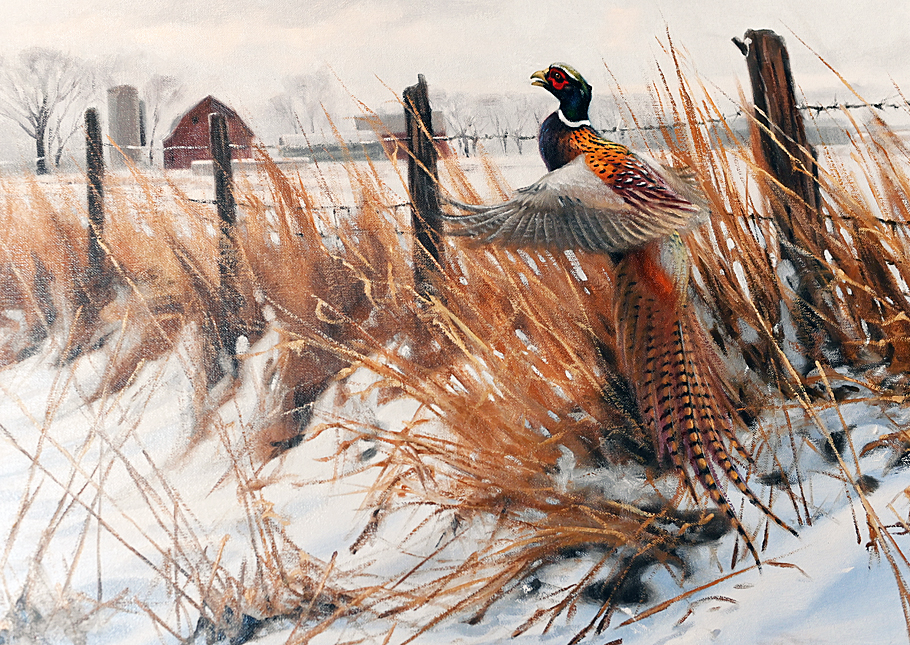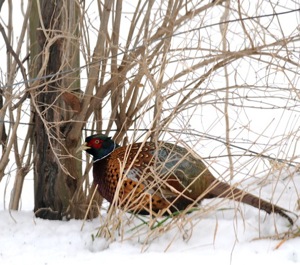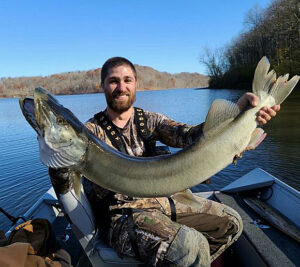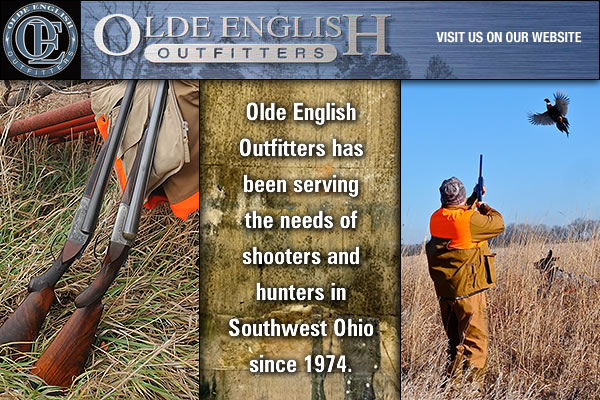
They were once as common as blackbirds. Now to see a wild pheasant in the Buckeye State is about as rare as a Teradactyl. Why?
By Ray Reilly for Press Pros
 Ohio’s fall upland hunting season opened on November 3rd, an event that used to be one of great anticipation. It was enough to skip school for, and teachers and principals back then would look the other way. They understood.
Ohio’s fall upland hunting season opened on November 3rd, an event that used to be one of great anticipation. It was enough to skip school for, and teachers and principals back then would look the other way. They understood.
Not so much, however, anymore.
For one, as culture evolves the sport, or tradition, of hunting small game, like squirrels, rabbits, and pheasants, has failed to evolve with it. Estimates are that in Ohio now 50% of the annual interest in hunting revolves around the whitetail deer.
And two, there simply aren’t the numbers of upland species to hunt like there once was – rabbits, quail, and especially the ring-neck pheasant, once so plentiful that the northern tier of Ohio was recognized, along with Illinois, Indiana, and Iowa, as being one of the Midwest’s best pheasant destinations. Today, just fifty years removed from the annual favorable outdoors forecasts in Outdoor Life, you can drive all day up and down I-75 and never see a pheasant.
Why?
The great decline is generally thought to have started in the early 70s, as part of the change in farming practices. Biologists then pointed to granular fertilizer and pesticide usage. Pheasants need grit for digestion, and they eat bugs and grasshoppers, so ingesting nitrogen and DDT was a lethal combined threat to regeneration.
Two, pheasants need grasslands, hay fields, and weedy fence rows to nest. Again, as farming practices changed, eliminating the afore-mentioned three also eliminated thousands of acres of prime pheasant cover, and soon, pheasants themselves.
 Three, as the price of corn and beans increased over the years, so, too, did the amount of acreage dedicated to those crops. Wetland areas were drained and tiled to make them more tillable, further eliminating habitat for wildlife. Fall tilling eliminated more cover as corn stalks were plowed under; and harvested beans left the landscape so barren that a rabbit or gamebird had no means of concealment, and little to eat.
Three, as the price of corn and beans increased over the years, so, too, did the amount of acreage dedicated to those crops. Wetland areas were drained and tiled to make them more tillable, further eliminating habitat for wildlife. Fall tilling eliminated more cover as corn stalks were plowed under; and harvested beans left the landscape so barren that a rabbit or gamebird had no means of concealment, and little to eat.
Attitudes about wildlife changed among farmers. Where once there was appreciation for the novelty of seeing nesting hens and broods in the spring and summer – flushing wild roosters ahead of the corn picker in the fall – that all went away for the sake of increased yields and dollars per acre. Farmers had to live, too, as the cost of doing business grew higher and higher. Many a landowner has been known to say: “I’ve never made dime off a rooster pheasant,” Sad, but true.
And, of course, encroachment. The population continues to grow, and with it the demand for housing. What once was prime habitat for birds and rabbits now stands as subdivisions. The needs of people have taken priority over the needs of our natural environment.
 In Ohio now there are only a couple of areas known to be relevant for pheasants, and overall the DNR estimates that there may be less than 5,000 wild birds state-wide, based on the annual roadside count survey…down from 5,000,000 at the height of pheasant density in the late 50s and early 60s.
In Ohio now there are only a couple of areas known to be relevant for pheasants, and overall the DNR estimates that there may be less than 5,000 wild birds state-wide, based on the annual roadside count survey…down from 5,000,000 at the height of pheasant density in the late 50s and early 60s.
County-wise, there are areas in south central Ohio – Madison, Pickaway, Ross, and Fayette counties – where there is at least some frequency of bird sightings. But if you want to maximize the experience, it’s simply best to seek out the state’s wingshooting preserves, like Arrowhead Pheasant Preserve, or Cherry Bend, in Wilmington, or Lone Oak, in Delaware. And in my home county, Mahoning, it’s a waste of time to hunt anything, period, except for whitetail deer!
Realistically, for those who grew up with the privilege of walking private land and experiencing nature’s abundance of flashy roosters and the anticipation of a noisy flush…well, those days are gone, and no amount of money poured into a hundred acres of habitat here or there is going to bring them back.
Simply put, it’s true that no one ever made a dime off a pheasant. Like everything else, we just took them for granted.
‘Til next time, I’ve enjoyed it!


Olde English Outfitters, in Tipp City, Ohio, proudly sponsors tales of the outdoors on Press Pros Magazine.com.

